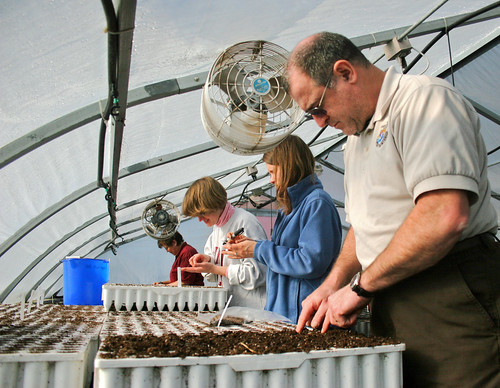
Biologists have long recognized the important role native plants play in maintaining a healthy forest. When native plants are crowded out by invasive plants, those native species can suffer to the point of extinction.
Since the early 1990s, the Hiawatha National Forest has operated a greenhouse in Marquette, Mich. The idea is to provide both native seeds and seedlings for successful restoration of sites impacted by logging or disturbed by other land management activities. For instance, when aging culverts are replaced, native plants can be introduced to re-vegetate disturbed soil. Seeds and seedlings are also used to enhance existing wildlife habitats.
During the summer months, between 35,000 and 90,000 native seedlings raised in the Marquette greenhouse are used in the national forest’s plant restoration projects.
The greenhouse is a busy place most of the year. Starting in December, seeds are “stratified,” or made ready for planting and germination. In January, containers are filled with soil and readied for planting, which begins in February and continues into April.
By early April, when the danger of frost is no longer a concern, native grasses are moved to the unheated greenhouse. Preparation for the greenhouse’s next season begins again each fall when Forest Service employees and volunteers harvest native seeds from the forest for raising of native plant materials in the forest greenhouses.
“We are so proud of and grateful for the contractors and volunteers who make the Marquette greenhouse successful,” said Deb LeBlanc, West Zone plant ecologist. “Their dedication is inspirational.”
Partnerships also play an important role in the success of the Hiawatha’s greenhouse. For instance, a partnership with WE Energies and Great Lakes Gas Pipelines in the early 1990s helped to restore the heated greenhouse on the former site of the Forest Service’s Northern Research Station office.
In 2006, the Northern Research Station and Superior Watershed Partnership joined with the Hiawatha to expand the forest’s greenhouse capacity by adding an additional unheated greenhouse.
While some forests and grasslands have greenhouses, the Forest Service has a network of six nurseries that produce between 12 million and 17 million seedlings a year, including bareroot and container grown seedlings.
